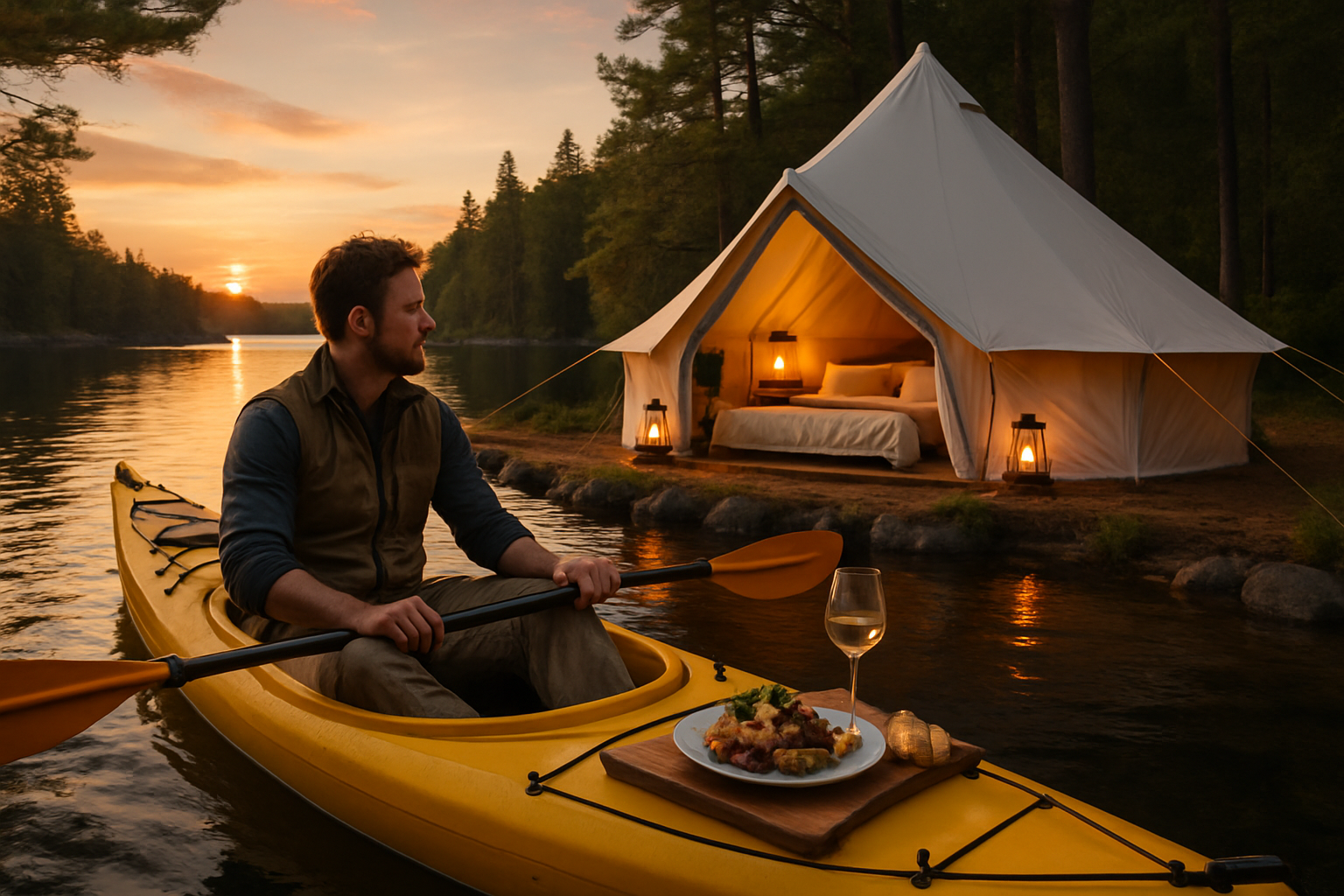Kayak Camping: A Fusion of Water Adventure and Wilderness Exploration
Discover the thrilling world of kayak camping, where the serenity of paddling meets the rugged charm of wilderness camping. This emerging travel trend combines the best of both worlds, offering adventurers a unique way to explore remote coastlines, hidden coves, and pristine lakes while carrying all the essentials for an overnight stay in nature. As more travelers seek immersive outdoor experiences, kayak camping has gained traction as a versatile and eco-friendly alternative to traditional camping methods.

In the 1960s and 70s, as recreational kayaking gained popularity, enthusiasts began to experiment with overnight trips. This marked the birth of modern kayak camping, combining the tranquility of paddling with the self-sufficiency of backcountry camping. The development of lightweight, durable materials and improved kayak designs further propelled the growth of this unique travel style.
The Appeal of Water-Based Wilderness Adventures
Kayak camping offers a distinctive blend of freedom, challenge, and connection with nature. Unlike traditional camping, where access is often limited to established trails and campsites, kayak camping opens up a world of possibilities. Paddlers can reach secluded beaches, remote islands, and pristine wilderness areas inaccessible by foot or vehicle.
This mode of travel provides a sense of self-reliance and accomplishment. Kayak campers must carefully plan their routes, navigate waterways, and manage their equipment, fostering a deep appreciation for the natural environment. The slower pace of travel allows for intimate encounters with wildlife and stunning landscapes, creating memorable experiences that resonate long after the journey ends.
Essential Gear and Preparation
Successful kayak camping requires a careful balance between necessary equipment and weight limitations. Unlike car camping, where space is less of a concern, kayak campers must be selective in their gear choices. Essential items include a lightweight tent, sleeping bag, cooking equipment, water filtration system, and appropriate clothing for varying weather conditions.
Specialized dry bags and waterproof containers are crucial for protecting gear from water damage. Many kayak campers opt for inflatable or folding kayaks, which offer easier transportation to launch sites. Safety equipment, including personal flotation devices, navigation tools, and first aid kits, is non-negotiable.
Proper preparation extends beyond gear selection. Kayak campers must develop skills in paddling techniques, navigation, weather forecasting, and leave-no-trace principles. Many enthusiasts take courses in kayaking and wilderness first aid to ensure they’re equipped to handle the challenges of this unique travel style.
Destinations and Route Planning
Kayak camping destinations span a diverse range of environments, from coastal waters and inland lakes to river systems. Popular locations include the San Juan Islands in Washington State, the Apostle Islands in Lake Superior, and the Florida Everglades. Each destination offers its own set of challenges and rewards, catering to different skill levels and interests.
Route planning for kayak camping requires careful consideration of factors such as water conditions, weather patterns, and camping regulations. Paddlers must account for tides, currents, and potential hazards while also identifying suitable campsites along their route. Many kayak campers use a combination of GPS technology and traditional map and compass skills to navigate effectively.
The Environmental Impact and Sustainable Practices
One of the most appealing aspects of kayak camping is its minimal environmental impact when practiced responsibly. This travel style allows adventurers to access remote areas without the need for motorized transportation, reducing carbon emissions and noise pollution. However, with this privilege comes the responsibility to preserve the pristine environments kayak campers often encounter.
Adhering to leave-no-trace principles is paramount. This includes proper waste management, minimizing campfire impacts, and respecting wildlife habitats. Many kayak campers go a step further by participating in cleanup efforts, removing debris from shorelines and waterways during their journeys.
Practical Pointers for Aspiring Kayak Campers
• Start with day trips to build paddling skills and confidence before attempting overnight excursions
• Invest in quality, waterproof dry bags to protect essential gear
• Learn basic navigation skills, including how to read nautical charts and use a compass
• Always check weather forecasts and water conditions before setting out
• Practice packing your kayak to distribute weight evenly and maximize space
• Familiarize yourself with local regulations regarding camping and fire restrictions
• Consider taking a kayaking safety course to prepare for potential emergencies
As the world of travel continues to evolve, kayak camping stands out as a compelling option for those seeking to forge deeper connections with nature. This unique blend of water sports and wilderness camping offers a fresh perspective on outdoor adventure, allowing travelers to explore hidden corners of the world at their own pace. By embracing the challenges and rewards of kayak camping, adventurers not only create unforgettable memories but also gain a renewed appreciation for the delicate balance between human exploration and environmental preservation.





